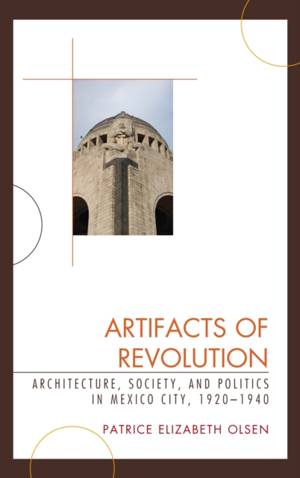
- Retrait gratuit dans votre magasin Club
- 7.000.000 titres dans notre catalogue
- Payer en toute sécurité
- Toujours un magasin près de chez vous
- Retrait gratuit dans votre magasin Club
- 7.000.000 titres dans notre catalogue
- Payer en toute sécurité
- Toujours un magasin près de chez vous
Artifacts of Revolution
Architecture, Society, and Politics in Mexico City, 1920-1940
Patrice Elizabeth Olsen
218,95 €
+ 437 points
Description
This innovative history argues that we can understand important facets of the Mexican Revolution by analyzing the architecture designed and built in Mexico City during the formative years from 1920 to 1940. These artifacts allow us to trace and understand the path of the consolidation of the Mexican Revolution. Each individual building or development, by providing indelible evidence of the process by which the revolution evolved into a government, offers important insights into Mexican history. Seen in aggregate, they reveal an ongoing urban process at work; seen as a "composition," they reveal changes over time in societal values and aspirations and in the direction of the revolution. This book focuses on structure, change, and process for this remarkable city "in the true image of the gigantic heaven." The changes described in Fuentes' narrative are man-made, not wrought by impersonal or natural forces except on the rare occasions of earthquake and flood. Patrice Elizabeth Olsen views Mexico City as an artifact of those who created it-representing their ardor, humanity, and religion, as well as their politics. Individual chapters detail the expression of revolutionary values and aims in the physical form of Mexico City's built environment between 1920 and 1940, examining direction and meaning in terms of who is given license to design and build structures in the capital city, and equally important, who is excluded. Through the reshaping of the capital the revolution was extended and institutionalized; physical traces of the process of negotiation that enabled the revolution to be "fixed" in the Mexican polity appear in the city's skyline, parks, housing developments, and other new construction, as well as in modifications to existing colonial-era buildings. In this manner, the author argues, Mexico City's urban form crystallized as a product of the revolution as well as a part of the revolutionary process, as it has been of other conquests throughout its history.
Spécifications
Parties prenantes
- Auteur(s) :
- Editeur:
Contenu
- Nombre de pages :
- 300
- Langue:
- Anglais
- Collection :
Caractéristiques
- EAN:
- 9780742554207
- Date de parution :
- 01-09-08
- Format:
- Livre relié
- Format numérique:
- Ongenaaid / garenloos gebonden
- Dimensions :
- 152 mm x 239 mm
- Poids :
- 566 g







